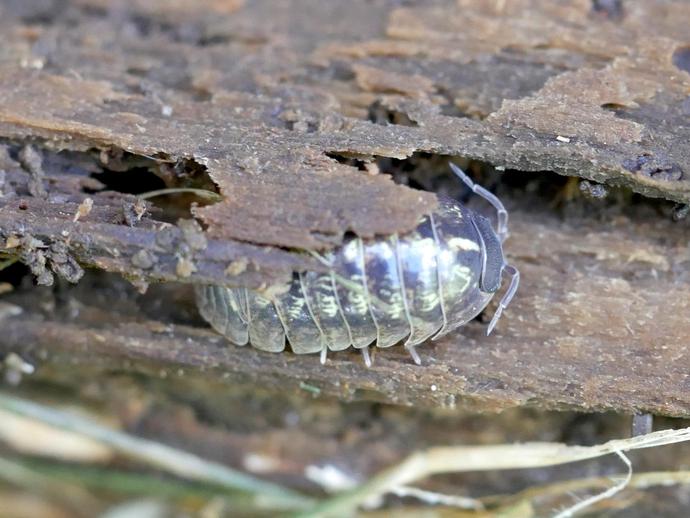January 9, 2021
We're reaching into the archives for today's #BenInNature update presented by our friends at Carter Bank & Trust! The following post was originally published on May 8, 2020.
This critter has more names than the average phonebook. It's usually referred to as a "woodlouse," but you might also call it a pill bug, a doodlebug, a roly-poly, a sow bug, or any number of other fun names. The pictured woodlouse is most likely Armadillidium vulgare, which is an invasive European species that can be found throughout much of the U.S.
So what is a woodlouse? Well, it's not a louse. It's also not an insect. It belongs to the isopod order, which means that -- believe it or not -- these guys are crustaceans! They belong to the same taxon as shrimp, lobster, crabs, crayfish, and all kinds of other largely aquatic creatures.
Of course, not all isopods are terrestrial. The very first woodlice were marine isopods that likely evolved to live on land sometime during the Carboniferous period. There are still many species of aquatic isopods, including several giant deep-sea isopods that can grow to more than a foot long!
Woodlice are famous for their ability to roll up into a ball when they feel threatened. When combined with their tough exoskeletons, this trick allows them to protect themselves from many different predators (and also entertain children for hours on end).
Woodlice are not considered pests, and they're pretty beneficial to have in your garden because they help produce compost. If you find a lot of woodlice inside your house, it may indicate that you have a moisture problem. However, the woodlice themselves do not spread any diseases and do not damage wood that isn't already rotting.
ABOUT #BenInNature
Social distancing can be difficult, but it presents a great opportunity to become reacquainted with nature. In this series of posts, Administrator of Science Ben Williams ventures outdoors to record a snapshot of the unique sights that can be found in the natural world. New updates are posted Monday - Friday, with previous posts highlighted on the weekends. This series of posts is made possible thanks to the support of VMNH Corporate Partner Carter Bank & Trust.
NATURE PHOTO IDENTIFICATIONS
If you discover something in nature that you would like help identifying, be sure to message us right here on Facebook with a picture (please include location and date of picture) and we'll have our experts help you identify it!

 Hours & Admissions
Hours & Admissions Directions
Directions

